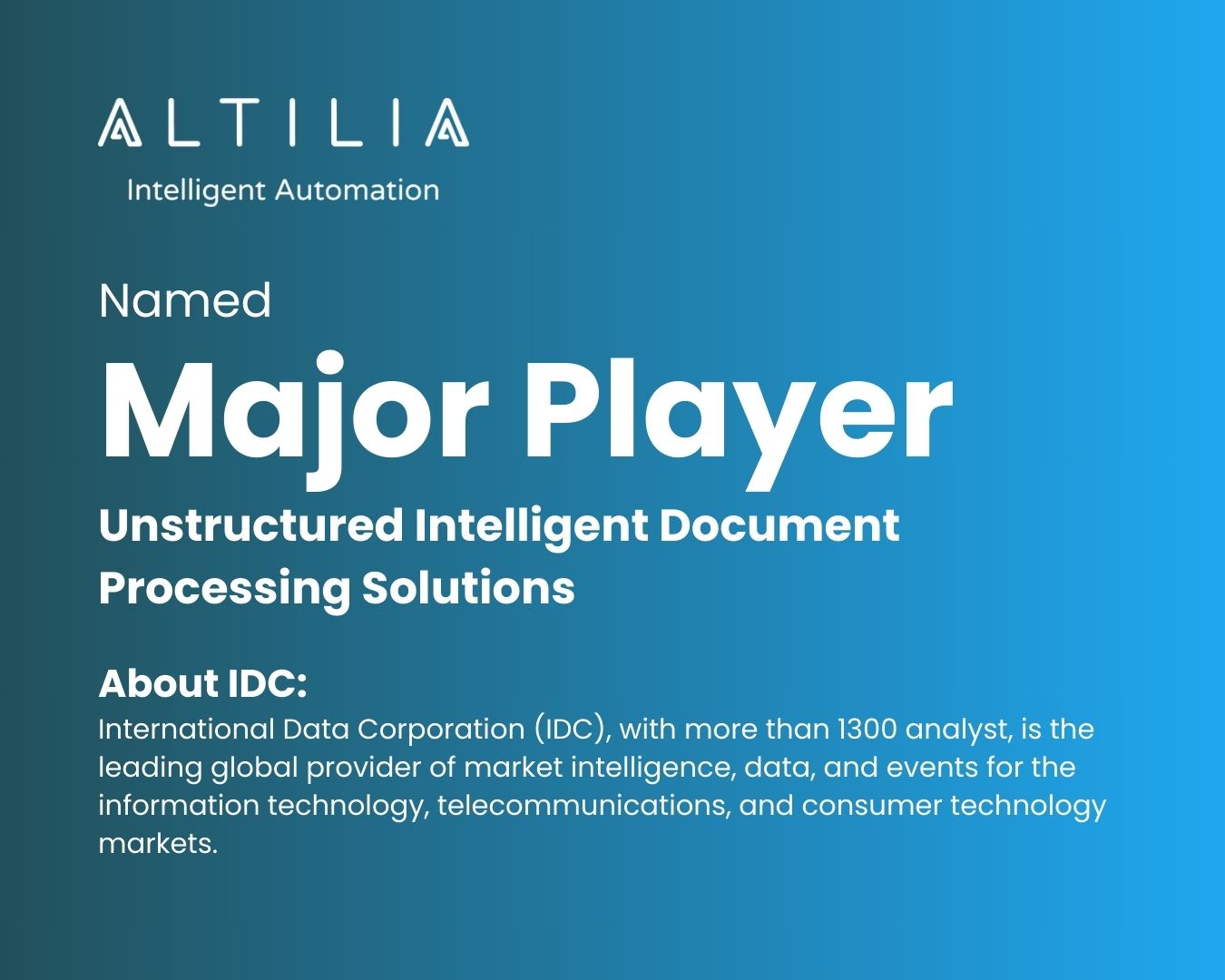There is a growing buzz about the transformative data opportunities that Intelligent Document Processing (IDP) can bring to businesses.
Gartner report that the IDP market is growing more than 100% a year and is projected to reach $5.4 billion in 2024 with enterprises realising cost efficiencies and dramatically improved processing capabilities.
Defining the IDP market, in its first report specifically focused on Intelligent Data Processing solutions, Gartner states that: “Intelligent document processing (IDP) solutions extract data to support automation of high-volume, repetitive document processing tasks and for analysis and insight.
“IDP uses natural language technologies and computer vision to extract data from structured and unstructured content, especially from documents, to support automation and augmentation”.
Easily adapted
IDP platforms are therefore distinct from other document processing products in that they enable the processing of documents created exclusively for humans, as well as those for machines; they can adapt — or be easily adapted — to formats not previously processed; and they extract data in various models.
“As such, organizations can transfer document processing work currently done by people and other machines (where automation is the goal) to IDPs”.
Enterprises and SMEs from industry sectors such as banking, insurance, retail, utilities and securities are in prime position to benefit from “significantly reduced processing time for documents and reduced errors from manual processing”.
Altilia is at the forefront of this movement to transform data processing providing the groundbreaking capabilities required to address new use cases and customer needs that require more functional depth and better user experience.
Critical Capabilities
Here are some of the critical capabilities that an IDP platform needs to be successful – and how Altilia technology supports its clients:
No-code/low-code easy to manage solution
- An IDP platform needs to be designed for a business user to easily manage the system without the need for expensive IT department support.
- Stakeholders from across your organization should be able to build and easily customize AI skills and workflow templates in order to streamline business specific functions.
- Advanced security and user profiling processes, protecting information and ensuring that the right access and authentication is in place and no risk of data spills or breaches.
End-to-end document processing capabilities
- Ability to apply a selection of pre-trained AI models, skills and packages.
- Availability of a dedicated UI for document ingestion and document labelling.
- Ability to fine-tune and customize AI models and skills with a simplified UI for document labelling and annotation.
- A seamless experience to process documents and train AI models, as opposed to managing different data, sources and processes in separated ‘silos’.
Data extraction and classification from any type of document and format
- Everything from pdfs to Word or Excel and handwritten or natural language documents can be analysed. And even faxes where they are still in use.
- Items such as charts or signatures, which are designed to be read by humans, can be examined and the key data extracted, reducing manual time and errors.
- Ability to process and extract data from long or complex documents with multiple non-standardized layouts (eg. Annual reports, financial statements, sustainability reports).
- Continuous learning and human feedback when needed
- The platform is able to learn and optimize AI models over time to improve performance and accuracy.
- The platform provides Human-In-The-Loop (HITL) review workflows to take advantage of human feedback when needed to eliminate errors and improve accuracy.
Embedded decision intelligence capabilities
- Ability to enrich documents with all the information extracted by AI models, to get the maximum value from unstructured data.
- Keyword and semantic search engine capabilities to discover action insights ‘buried in’ long complex documents.
Advanced document-intensive process automation capabilities
- Availability of hybrid AI methods to automate tasks that require human-level precision.
- Capability to eliminate manual, error-prone and often repetitive tasks to reduce costs, improve process efficiency and trigger error-free responses.
- Ability to compare extractions from one document to another, looking for deviations and similarities in order to process actions such as mortgage applications where data comes from different sources.
Interoperability
- Alitalia’s platform can eliminate the pain of interoperability issues and plug in to the customers digital ecosystem and work with other business applications – without the need for costly engineering integration work.
- Uses extensive set of connectors to exchange data and interact with Enterprise Resource Planning (ERP), Content Management System (CMS) and Customer Relationship Management (CRM) applications.
- Feed 3rd party Enterprise Content Management (ECM) and Business Intelligence (BI) applications with metadata to enhance their capabilities.
Cloud-Ready Solution
- The shift to the cloud brings huge advantages in computing capability and flexibility and Altilia’s platform works seamlessly in cloud environments.
- Our SaaS solution offers SMEs the same performance as for large Enterprises and ensure that time-consuming processes can be handled in an automated way.
- Capability to run workflows without the need to develop complex AI Ops or hire qualified IT experts.
Altilia Intelligent Automation provides all of the key capabilities required for an IDP platform and continues to develop features and benefits rapidly with its top-level team of scientists and engineers.
In upcoming articles, we will go deeper on the key capabilities required and demonstrate how Altilia’s IDP platform can transform your organization.
For more information on how we can support you, contact Altilia here.




